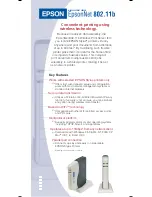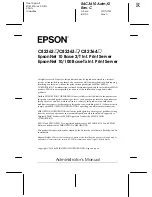
4
Appendix F Glossary
Item
Description
A
ADR
Asynchronous DRAM Refresh is a platform process which flushes the data in ADR
protected write buffers to DCPMM when the system power unit detects power loss from
the AC power supply.
B
BIOS
Basic input/output system is non-volatile firmware pre-installed in a ROM chip on a
server's management module. The BIOS stores basic input/output, power-on self-test,
and auto startup programs to provide the most basic hardware initialization, setup and
control functionality.
E
Ethernet
adapter
An Ethernet adapter, also called a network interface card (NIC), connects the server to the
network.
G
GPU module
Graphics processing unit module converts digital signals to analog signals for output to a
display device and assists processors with image processing to improve overall system
performance.
H
HDM
Hardware Device Management is the server management control unit with which
administrators can configure server settings, view component information, monitor server
health status, and remotely manage the server.
Hot swapping
A module that supports hot swapping (a hot-swappable module) can be installed or
removed while the server is running without affecting the system operation.
K
KVM
KVM is a management method that allows remote users to use their local video display,
keyboard, and mouse to monitor and control the server.
N
NVMe VROC
module
A module that works with Intel VMD to provide RAID capability for the server to virtualize
storage resources of NVMe drives.
R
RAID
Redundant array of independent disks (RAID) is a data storage virtualization technology
that combines multiple physical hard drives into a single logical unit to improve storage
and security performance.
Redundancy
A mechanism that ensures high availability and business continuity by providing backup
modules. In redundancy mode, a backup or standby module takes over when the primary
module fails.



































